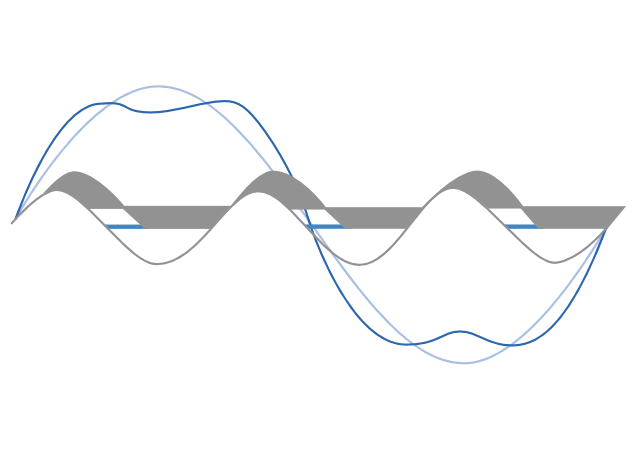-
RECORDING HARMONICS

Harmonic loads are the main cause of invisible power quality problems. Current harmonics have no share of the active power and place a thermal load on the grid. They cause losses within the electrical installation, which can lead to thermal overload and shorten the life of equipment.
Harmonics can cause enormous costs for repair and replacement of defective devices. In addition, problems in manufacturing processes or even production downtimes can occur. Only if the harmonic load is detected can you do something about it.
The harmonic load is usually measured at the connection or transfer point to the public power grid. This is often referred to as the PCC (Point of Common Coupling). In some circumstances, however, it may also be important to determine the harmonic load from individual equipment or groups of equipment in order to detect internal power quality problems and their causes.
In terms of the measurement devices used, you must consider the magnitude up to which harmonics are measured. If the harmonics are to be recorded to determine compliance with a standard, e.g. EN 50160, any necessary certifications or requirements must be factored into the selection. Another aspect in the selection is the question of other required parameters, so as to cover all required values with one measurement device.
External content from Pardot
To protect your personal data, the connection to Pardot has been blocked. Click on the button to unblock the Pardot form. By unblocking the form, you accept Pardot's privacy policy. You can find more information about Pardot's data protection in our privacy policy. Show external content